Septic pulmonary emboli refer to the embolization of infectious particles (intravascular thrombus containing micro-organisms) into the lungs via the pulmonary arterial system.
On this page:
Clinical presentation
Symptoms can be non-specific but most manifest as a bacteremia 18 with, dyspnea, chest pain, cough and other respiratory symptoms. Often concurrent symptoms of the extrapulmonary primary infective focus are also present.
Pathology
Septic emboli can originate from different sources 5:
right-sided infective endocarditis, particularly tricuspid valve (occasionally pulmonary valve 19)
infection elsewhere in the body (e.g. soft tissue infection) with associated septal defects
infected deep venous thrombosis
immunological deficiencies
-
infected catheters/lines
venous lines 21 (e.g. central venous catheters)
pacemaker wires
post-anginal septicemia 10
periodontal disease 10
Common pathogens include 22:
Klebsiella pneumoniae
Staphylococcus aureus
Pseudomonas aeruginosa
Escherichia coli
Salmonella group B
Fusobacterium necrophorum (in Lemierre syndrome)
Radiographic features
The clinical context is significant in image interpretation and differential considerations. Most patients will be clinically septic and have positive blood cultures at the time of imaging assessment.
Plain radiograph
Chest x-ray features are non-specific but may show 3:
peripheral, lower lobe predominant infiltrative densities: can be unilateral or bilateral
-
diffuse bilateral nodular densities (often poorly marginated) in varying stages of cavitation
these nodules generally range between 1-3 cm
the nodules vary greatly in size, which is a reflection of repeated episodes of embolic shower 15
may increase in number or change in appearance (size or degree of cavitation) on subsequent short-term follow up radiographs 12
accompanying small pleural effusions can be common
features suggestive of complicating pleura empyemas may be seen
CT
Bilateral abnormalities may be present in as much as 80% of cases 18.
-
peripheral nodules with clearly identifiable feeding vessels associated with lung abscesses 2,3
-
subpleural nodular lesions or wedge-shaped densities with or without necrosis caused by septic infarcts (these can manifest as cavitary pulmonary infarcts)
these may have a dependent, lower zone predilection 13,15
the wedge-shaped lesions usually range between 10-20 mm 6
peripheral nodular densities usually range between 5-35 mm 7
Treatment and prognosis
Management focuses on treatment of the underlying infection and any associated complications.
Complications
Recognized complications include:
empyema formation 15
pneumothorax formation 16,17
Differential diagnosis
For small and/or different size cavitary lung lesions on HRCT or CT chest, consider:
pulmonary embolism (thromboembolism)


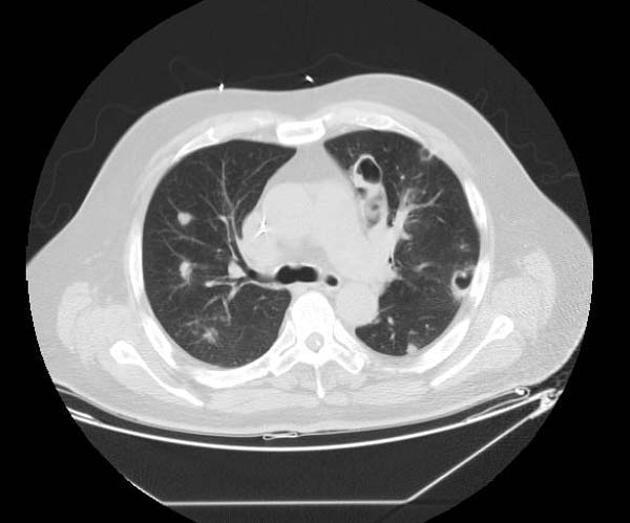
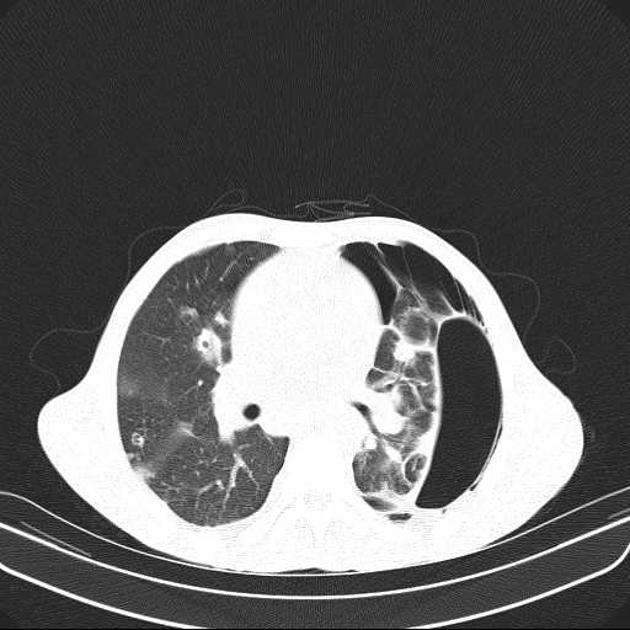
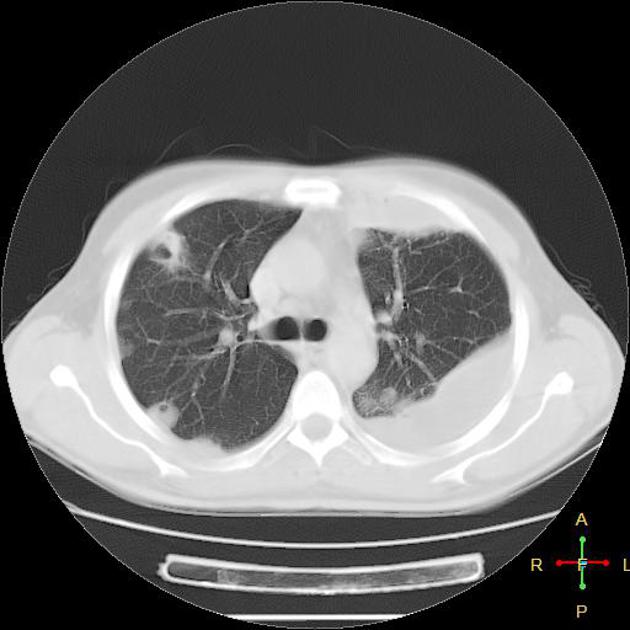
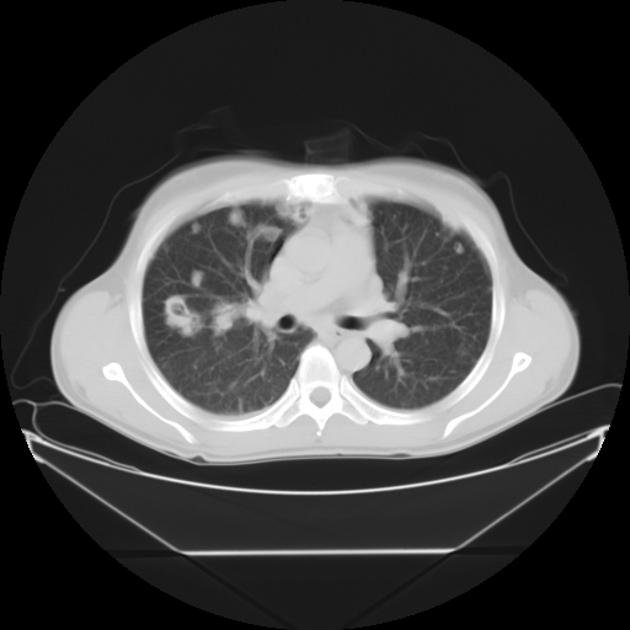
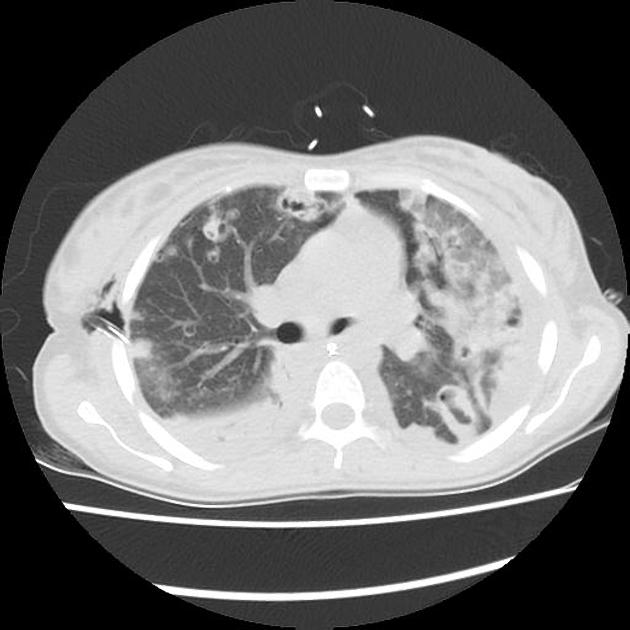
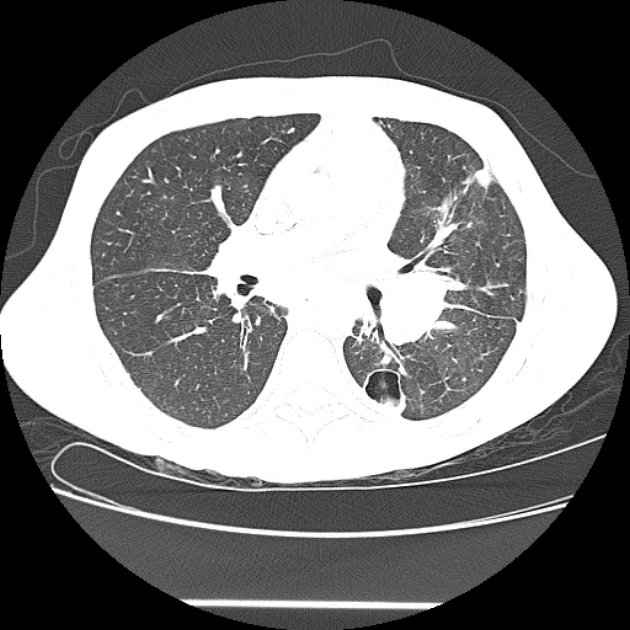
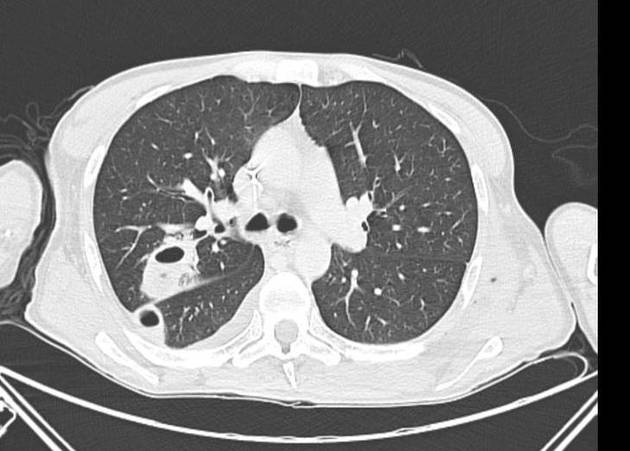
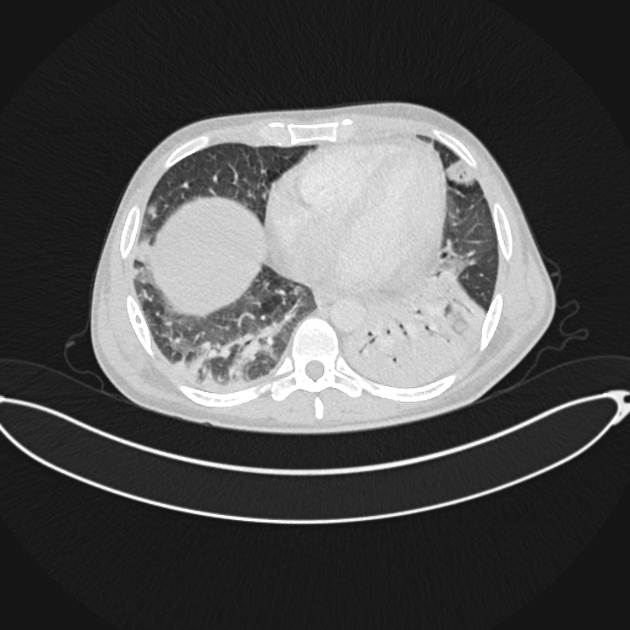
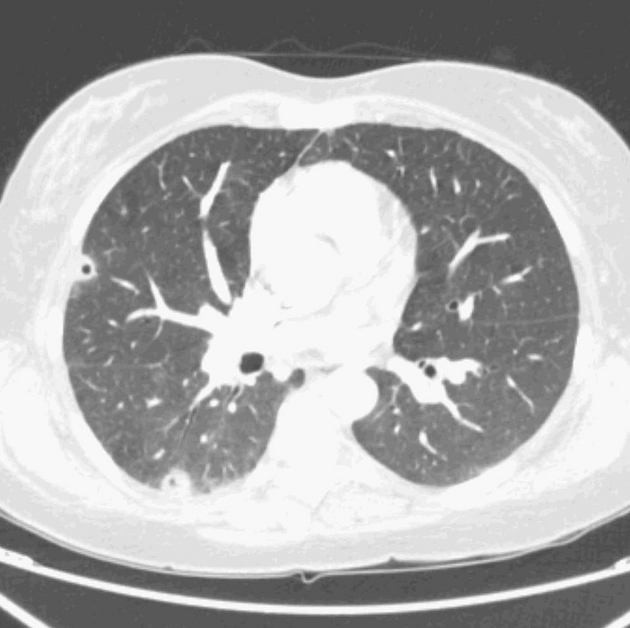
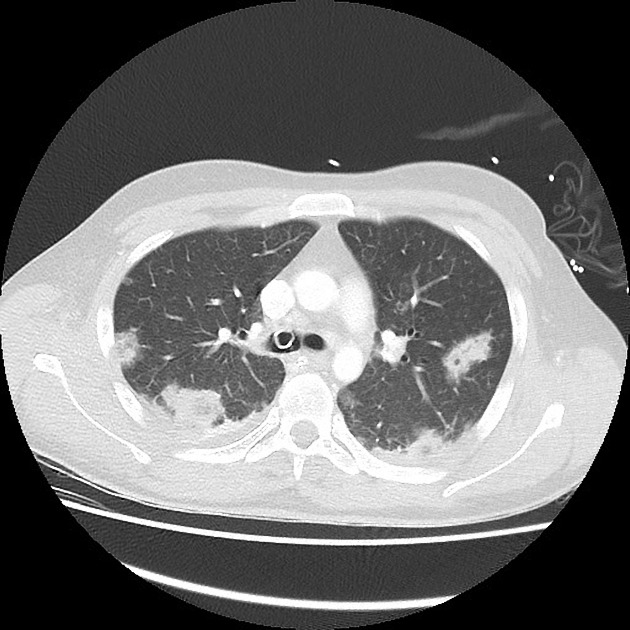
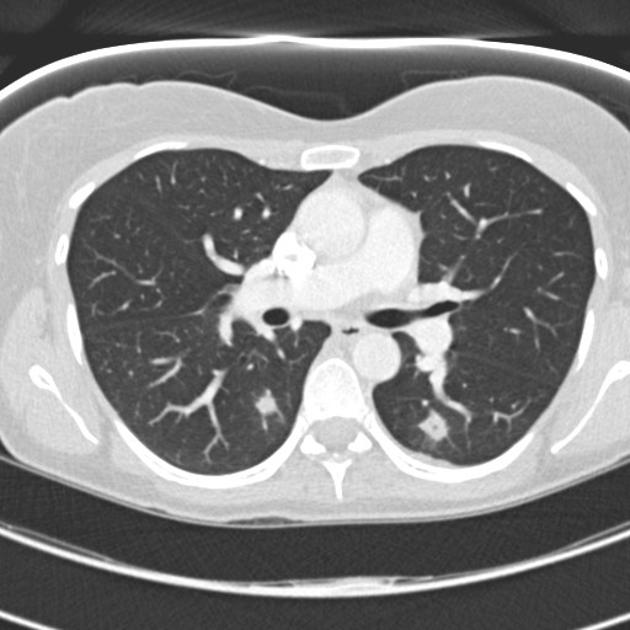



 Unable to process the form. Check for errors and try again.
Unable to process the form. Check for errors and try again.